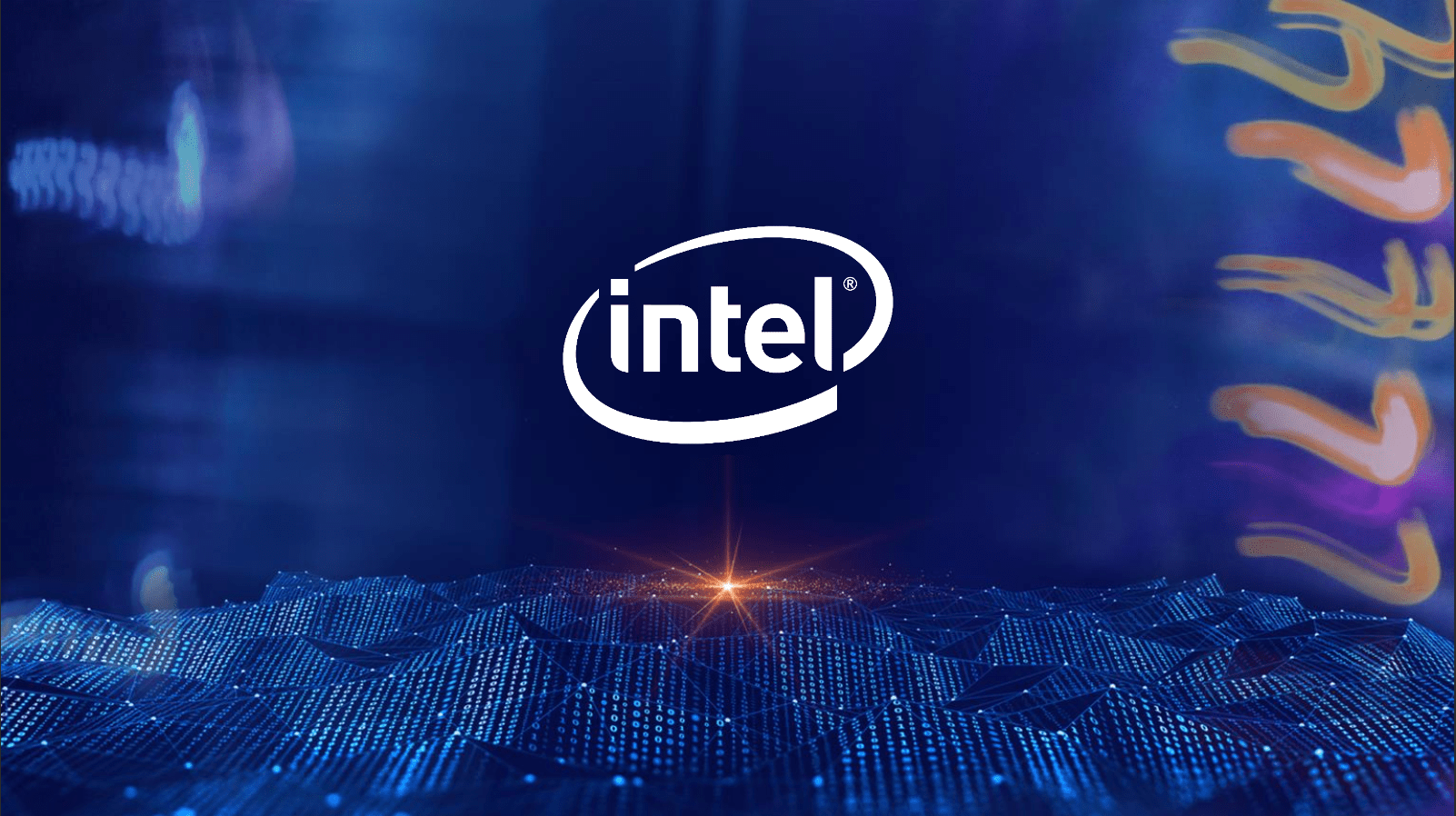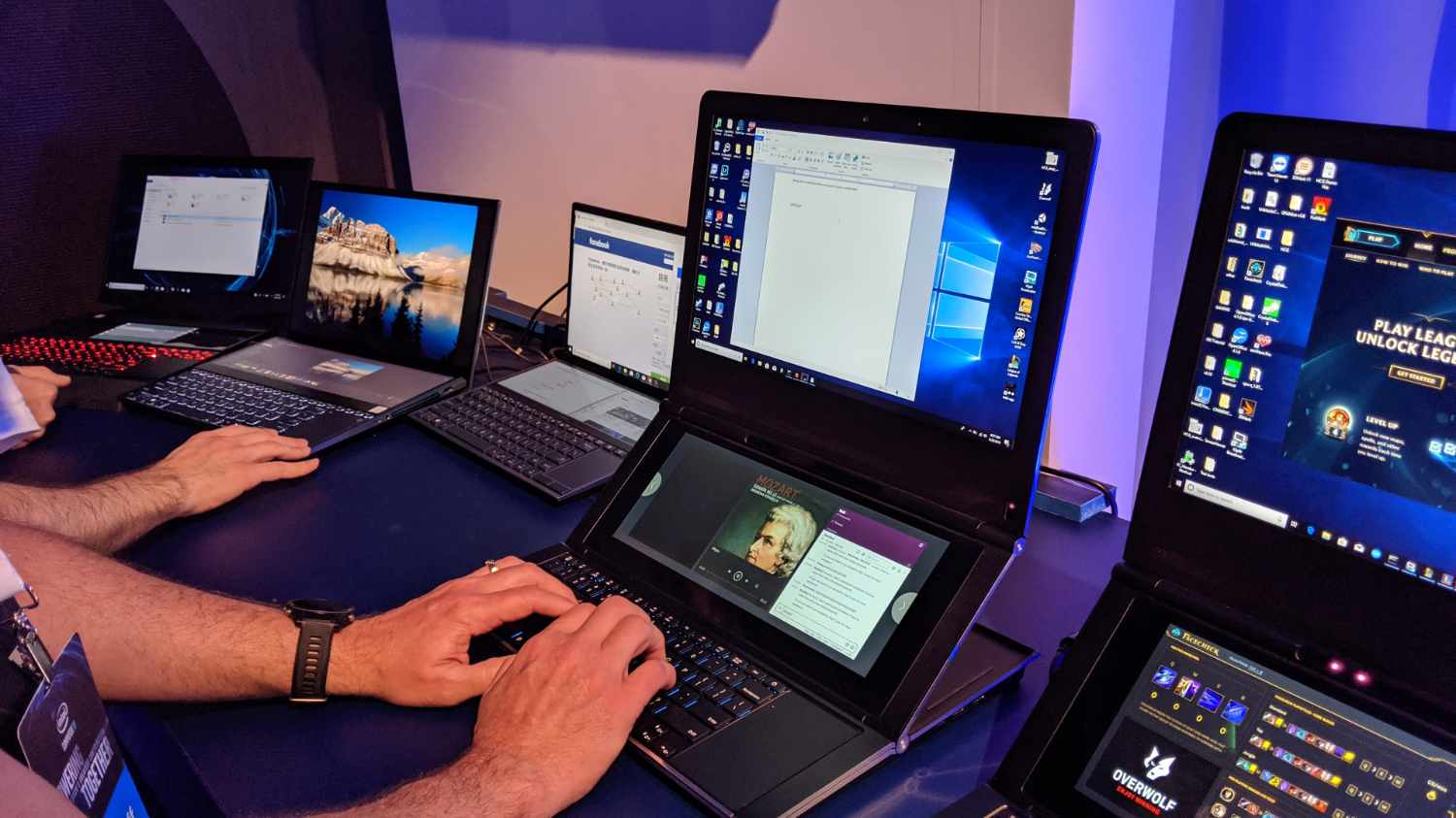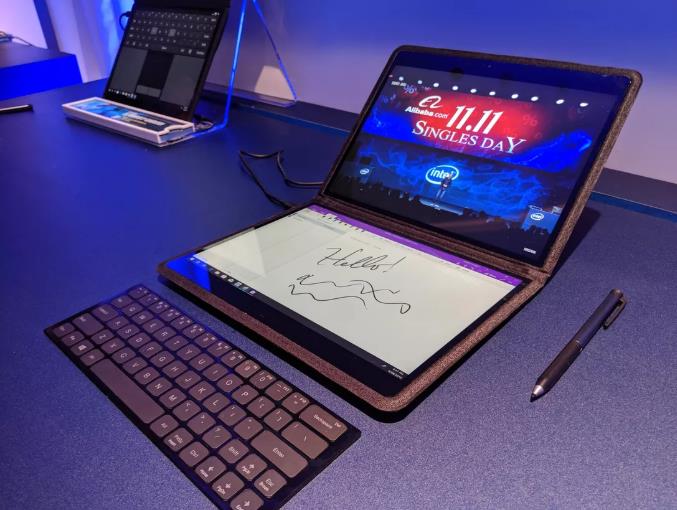At Computex 2019, we saw that dual-screen laptops are definitely a thing now. Intel brought up several proof-of-concept devices that show what laptop makers like Asus, Dell and HP can do with its tech. We have to keep an open mind and accept it as a possibility. At a press event show in Taipei, the company showed off its Honeycomb Glacier laptop which is equipped for gaming with two screens stacked one on top of the other.
Asus had announced the ZenBook Pro Duo earlier this week, although not exactly meant for gaming. However, Honeycomb Glacier is for gamers. It combines a “17.3-inch” display with another “12.3-inch” screen.
But, the most impressive feature is eye tracking. The second display can hold three programs, and there’s also a camera in between the two screens that will track wherever you’re looking. It will know what window you’re looking at, whether it be on the top screen or on the bottom screen, and will then automatically put you in control of that window. That makes navigating the two screens easy, in a very futuristic sense, and also means you don’t have to use the shirked-to-the-right trackpad as much.
As for the specifications, the parts are all off-the-shelf, including an eight-core / 16 thread, 9th Gen H-series Intel processor and an overclocked Nvidia GeForce GTX 1070. There’s a fair bit of room below the hinge, with a cooling apparatus to draw air against a custom motherboard to cool 175 watts of components, all with just one large fan. And despite just one fan, it measures 42 decibels.
It has a beefy top bezel which supports a webcam capable of Tobii eye tracking, and at the center of the top hinge is a second Tobii camera. You will be able to use the companion software to toggle between applications. If you want to switch from streaming to chatting up my viewers, you could do so with a passing glance.
Another possible benefit of Tobii is battery life conservation. When I’m looking at the top screen, the bottom screen turns off, and vice versa. Because displays are one of the biggest threats to battery life longevity, this could help compensate for the high TDP and universal overclocking capabilities.
Intel isn’t manufacturing these laptops, they’re just concepts for now.



